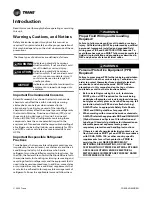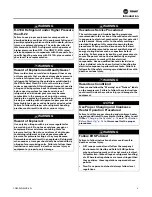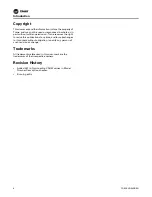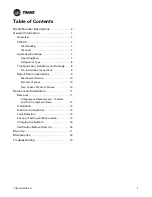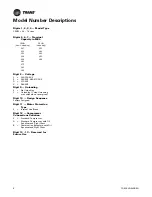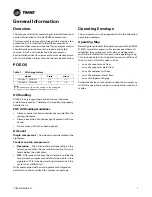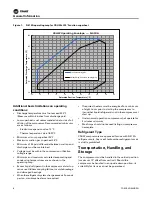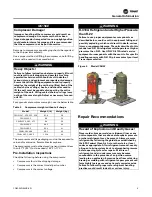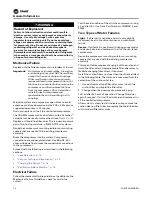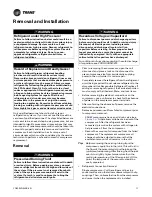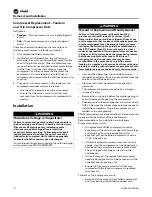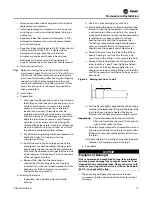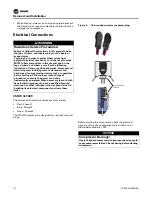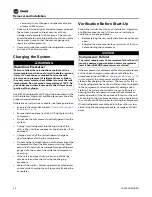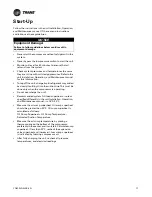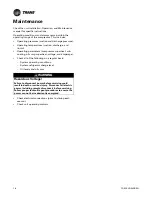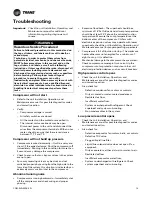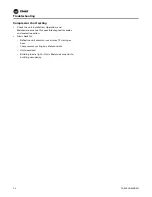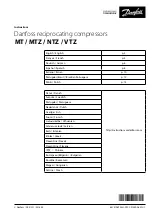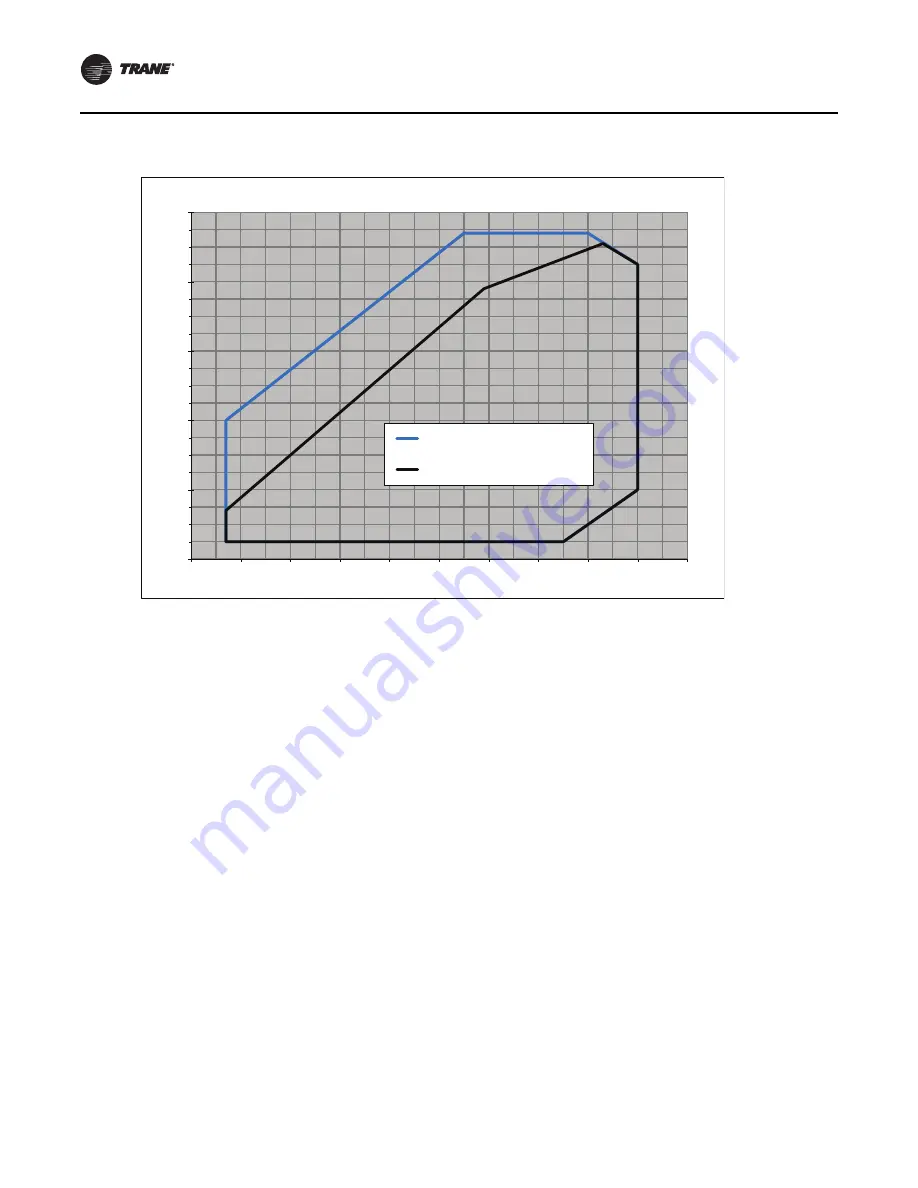
General Information
8
COM-SVN003B-EN
Additional basic limitations on operating
conditions:
•
Discharge temperature must not exceed 300°F
(Measure within 6 inches from discharge port).
•
Low superheat is not recommended due to risk of oil
dilution of the compressor. Recommended minimums
are as follows:
–
Electronic expansion valve 10°F.
–
Thermal expansion valve 18-20°F.
•
Minimum oil sump superheat 20°F.
•
Maximum suction gas superheat 54°F.
•
Minimum of 30 psid differential between suction and
discharge must be maintained.
•
Voltage must be within the compression utilization
voltage range.
•
Minimum and maximum saturated evaporating and
condensing temperatures are as shown in the
operating map.
•
Excess liquid refrigerant in the compressor at start up
can cause Oldham coupling failure, involute breakage
and damaged bearings.
•
When the refrigerant system charge exceeds 3 pounds
per ton, crankcase heaters are required.
•
If required, heaters must be energized for a minimum
of eight hours prior to starting the compressor to
insure that liquid refrigerant is not in the compressor at
start up.
•
Under normal operation compressor shall operate for
3 minutes minimum.
•
Max Amps should not exceed listing on compressor
nameplate.
Refrigerant Type
CSHW compressors are approved for use with R-410A
refrigerant only. Any use of hydrocarbon refrigerants or air
is strictly prohibited!
Transportation, Handling, and
Storage
The compressor must be handled in the vertical position
(maximum 15° offset from vertical). Should the
compressor be handled in an upside down position, its
suitability for its use can not be guaranteed.
Figure 1.
R-410A operating map for CSHW at 20°F suction superheat
60
80
100
120
140
160
-20
-10
0
10
20
30
40
50
60
70
80
Saturated Discharge
T
e
mperature
(
°
F)
Saturated Suction Temperature (
°
F)
CSHW Operating Envelope --- R-410A
Full Load Operating Map
Unloaded Map; Reduced Operating Map


